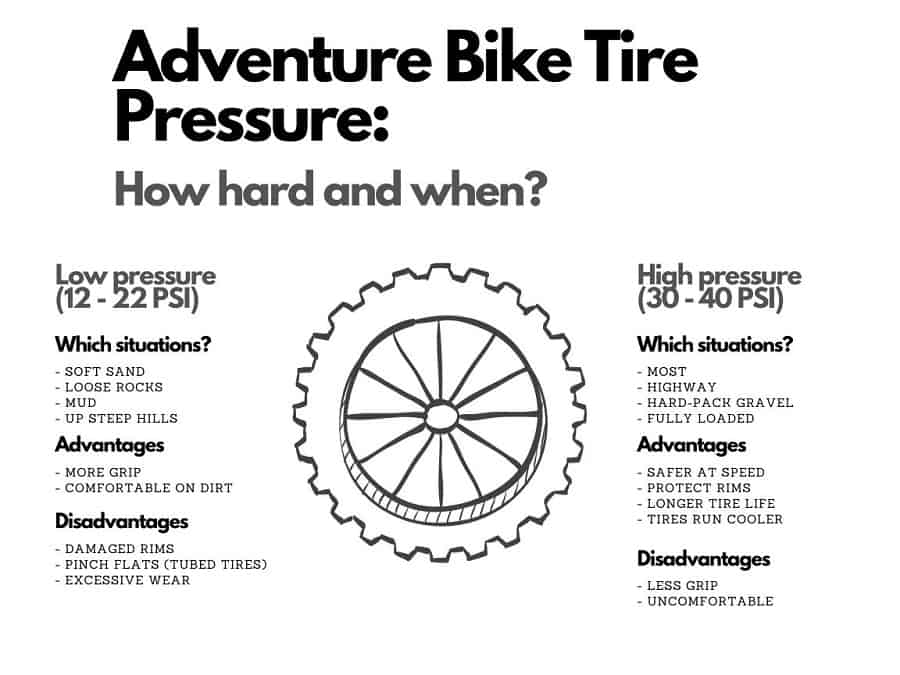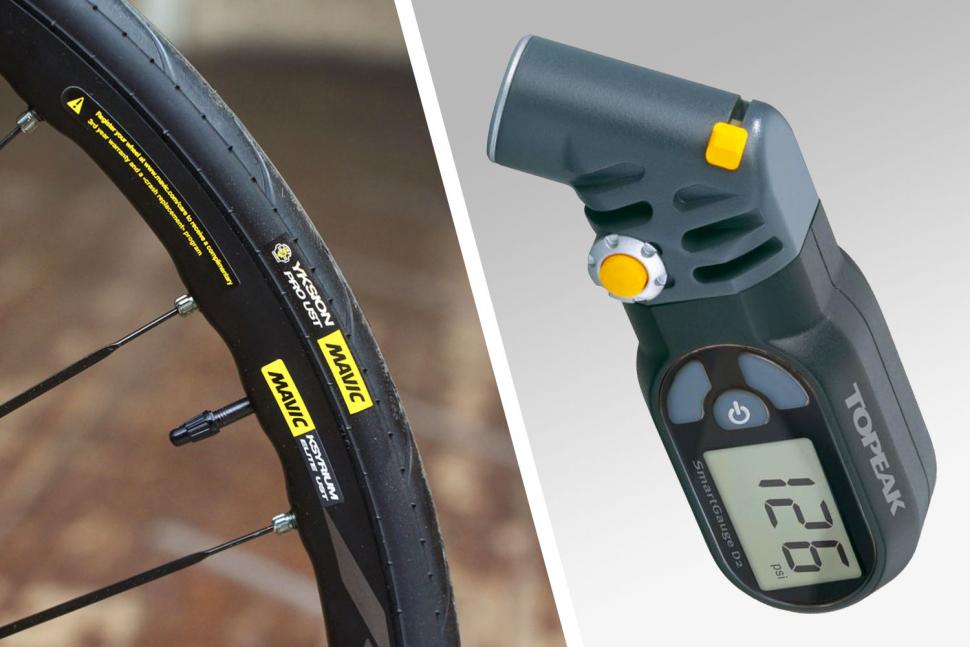Understanding the Importance of Proper Tyre Inflation
Maintaining the recommended bike tyre pressure is crucial for several reasons. First, appropriate tyre pressure ensures improved safety, as it reduces the likelihood of sudden tyre failure or loss of control due to poor traction. Properly inflated tyres also contribute to enhanced performance, allowing for better handling, acceleration, and braking. Furthermore, energy efficiency is a significant advantage, as correctly inflated tyres reduce rolling resistance, enabling riders to cover longer distances with less effort.
Factors Influencing Recommended Tyre Pressure
Various factors determine the recommended bike tyre pressure, ensuring optimal performance, safety, and energy efficiency. First, the type of bike plays a significant role. For instance, road bikes typically require higher tyre pressure than mountain bikes or hybrid bikes due to their narrower tyres and smoother riding surfaces. Rider’s weight is another essential factor, as heavier riders generally need higher tyre pressure to support their weight and prevent excessive tyre deformation.
Terrain conditions significantly influence the recommended tyre pressure as well. For example, cyclists riding on rough, rocky, or root-infested trails should reduce their tyre pressure to improve traction and absorb shocks. Conversely, smoother surfaces, such as paved roads or bike paths, call for higher tyre pressure to minimize rolling resistance and improve overall performance.
How to Measure Bicycle Tyre Pressure
To accurately measure bike tyre pressure, follow these steps:
- Acquire a reliable tyre gauge: Choose a high-quality tyre gauge, either manual or digital, to ensure accurate and consistent readings. Some popular options include floor-standing gauges, handheld gauges, or even smartphone-compatible gauges.
- Check the tyre pressure when the tyres are cold: Tyre pressure tends to increase as the tyres warm up during use. For the most accurate readings, measure the pressure when the bike has been stationary for at least a few hours.
- Remove the tyre gauge cap and press the gauge onto the tyre valve: Align the tyre gauge with the valve and press firmly to establish a seal. If necessary, remove the valve core to facilitate airflow.
- Interpret the pressure units and record the reading: Tyre gauges typically display pressure in PSI (pounds per square inch), BAR (atmospheres), or kPa (kilopascals). Make sure to understand the units and record the tyre pressure for future reference.
- Repeat the process for the other tyre: Ensure both tyres have the recommended bike tyre pressure for optimal performance, safety, and energy efficiency.
When measuring tyre pressure, consider the following tips:
- Ensure the tyre gauge is calibrated and accurate.
- Check tyre pressure regularly, ideally before every ride.
- Maintain consistent measurement practices to ensure accurate comparisons over time.
Popular Tyre Pressure Guidelines for Different Bike Types
The recommended bike tyre pressure varies depending on the type of bike, as each category has unique characteristics and purposes. Here are the general tyre pressure guidelines for various bike types:
- Road Bikes: Typically, road bikes require higher tyre pressure, ranging from 80 to 130 PSI (5.5 to 9 bar or 550 to 900 kPa), to minimize rolling resistance and maximize speed on smooth surfaces. However, some road bikes with wider tyres may have lower recommended pressure ranges.
- Mountain Bikes: Mountain bikes generally require lower tyre pressure, typically between 25 and 50 PSI (1.7 to 3.5 bar or 250 to 500 kPa), to improve traction and absorb shocks on rough terrains. Adjusting tyre pressure according to the specific trail conditions is crucial for optimal performance.
- Hybrid Bikes: Hybrid bikes usually have a recommended tyre pressure range of 50 to 70 PSI (3.5 to 4.8 bar or 500 to 700 kPa), as they are designed for versatile use on various surfaces, including paved roads, gravel paths, and light off-road trails. Adjusting tyre pressure based on the riding conditions is essential for optimal performance.
- BMX Bikes: BMX bikes generally require tyre pressure between 40 and 65 PSI (2.8 to 4.5 bar or 400 to 650 kPa), depending on the bike’s intended use, such as racing, freestyle, or dirt jumping. Lower pressure allows for better traction and control, while higher pressure ensures better speed and responsiveness.
These guidelines serve as a starting point, but it’s essential to consider the bike’s specific design, the rider’s weight, and the riding conditions when determining the recommended bike tyre pressure for optimal performance and safety.
The Role of Tyre Construction in Inflation Pressure
Tyre construction significantly influences the recommended bike tyre pressure and overall bike performance. Various components, such as materials, tread patterns, and casing design, contribute to the tyre’s performance and durability.
- Materials: The materials used in tyre construction, such as rubber compounds, can affect the recommended tyre pressure. For example, softer rubber compounds may require higher pressure to prevent excessive wear and improve energy efficiency, while harder compounds may allow for lower pressure without compromising durability.
- Tread Patterns: Tread patterns can influence the recommended tyre pressure and bike performance, particularly in different terrains. Aggressive tread patterns for off-road use may require lower pressure to improve traction, while smoother tread patterns for road use may necessitate higher pressure for better speed and energy efficiency.
- Casing Design: The casing design, which includes the number and arrangement of plies (layers) in the tyre, can impact the recommended tyre pressure and overall bike performance. Tyres with more plies generally require higher pressure, while those with fewer plies may allow for lower pressure without sacrificing structural integrity.
By understanding the role of tyre construction in inflation pressure, cyclists can make informed decisions about the recommended bike tyre pressure for their specific bike and riding conditions, ultimately enhancing safety, performance, and energy efficiency.
How to Adjust Bicycle Tyre Pressure for Different Conditions
Adjusting tyre pressure based on various factors, such as weather, road surface, and rider preferences, can significantly impact bike performance and safety. Here are some practical tips for adjusting the recommended bike tyre pressure:
- Weather: In wet or slippery conditions, consider reducing tyre pressure to improve traction and control. Conversely, in dry conditions, you can increase tyre pressure for better speed and energy efficiency.
- Road Surface: Rough or uneven surfaces, such as gravel or cobblestones, may require lower tyre pressure to absorb shocks and improve comfort. Smooth surfaces, like pavement, typically allow for higher tyre pressure to minimize rolling resistance and enhance speed.
- Rider Preferences: Personal preferences, such as a softer or firmer ride, can influence the recommended bike tyre pressure. Experiment with different pressure levels to find the optimal balance between comfort, control, and performance.
Under-inflation can lead to increased rolling resistance, reduced control, and potential tyre damage. Over-inflation, on the other hand, may result in a harsher ride, reduced traction, and increased risk of punctures or blowouts. Regularly checking and adjusting tyre pressure according to the riding conditions and personal preferences is crucial for maintaining optimal bike performance and safety.
Popular Tyre Pressure Monitoring Systems
Tyre pressure monitoring systems (TPMS) are valuable tools for maintaining optimal tyre pressure and ensuring safety, performance, and energy efficiency. Here are some popular TPMS options, along with their features, benefits, and potential drawbacks:
1. Wireless TPMS
Wireless TPMS typically use sensors installed on the valve stems or inside the tyre to transmit real-time pressure data to a bike computer or smartphone app. These systems offer convenience and accuracy, but they can be more expensive and may require battery replacement or recharging.
2. Smartphone Integrated TPMS
Some TPMS systems integrate with smartphones via Bluetooth, allowing riders to monitor tyre pressure and receive alerts when adjustments are needed. These systems are often more affordable and versatile but may have limited compatibility with certain devices or operating systems.
3. Pressure Gauge Integrated TPMS
Some high-end floor pumps and hand pumps come with built-in pressure gauges that display tyre pressure during inflation. These TPMS options are convenient and cost-effective, but they may not provide real-time monitoring during rides.
While TPMS can be beneficial, they may also have some potential drawbacks, such as added cost, potential compatibility issues, and the need for regular maintenance or battery replacement. However, the advantages of maintaining optimal tyre pressure generally outweigh these concerns, making TPMS a valuable investment for many cyclists.
Maintaining Proper Bicycle Tyre Pressure: A Summary
Maintaining the correct bike tyre pressure is crucial for ensuring improved safety, performance, and energy efficiency. Factors such as bike type, rider’s weight, and terrain conditions significantly influence the recommended bike tyre pressure. To accurately measure tyre pressure, use a high-quality tyre gauge and follow a step-by-step process, interpreting pressure units and ensuring consistent readings.
Various bike types have different recommended tyre pressure ranges, with road bikes generally requiring higher pressure and mountain bikes and hybrid bikes requiring lower pressure. Tyre construction, including materials, tread patterns, and casing design, can also influence the recommended tyre pressure and overall bike performance.
Adjusting tyre pressure based on factors like weather, road surface, and rider preferences is essential for optimal bike performance and safety. Under-inflation and over-inflation can lead to potential consequences, such as reduced control, increased rolling resistance, and potential tyre damage. Tyre pressure monitoring systems can help maintain optimal tyre pressure, offering convenience and accuracy, but they may have added costs and potential drawbacks.
In conclusion, regular tyre pressure checks, proper adjustments, and understanding the role of tyre construction and conditions in determining the recommended bike tyre pressure are vital for cyclists seeking improved safety, performance, and energy efficiency. By following the guidelines provided in this comprehensive guide, riders can ensure a more enjoyable and efficient cycling experience.







